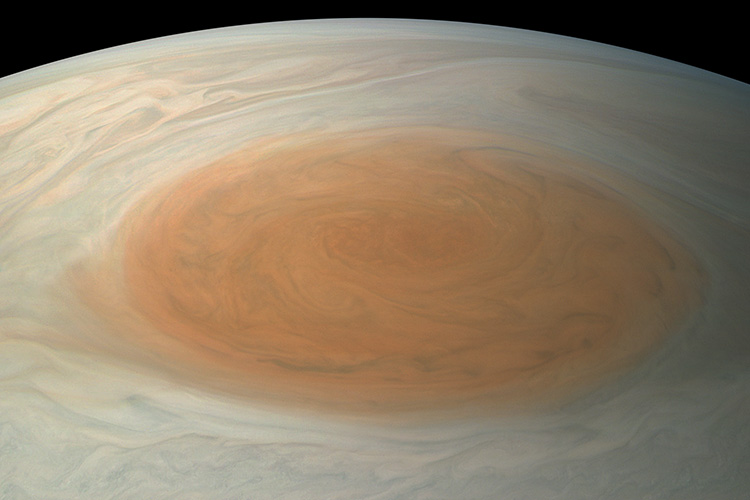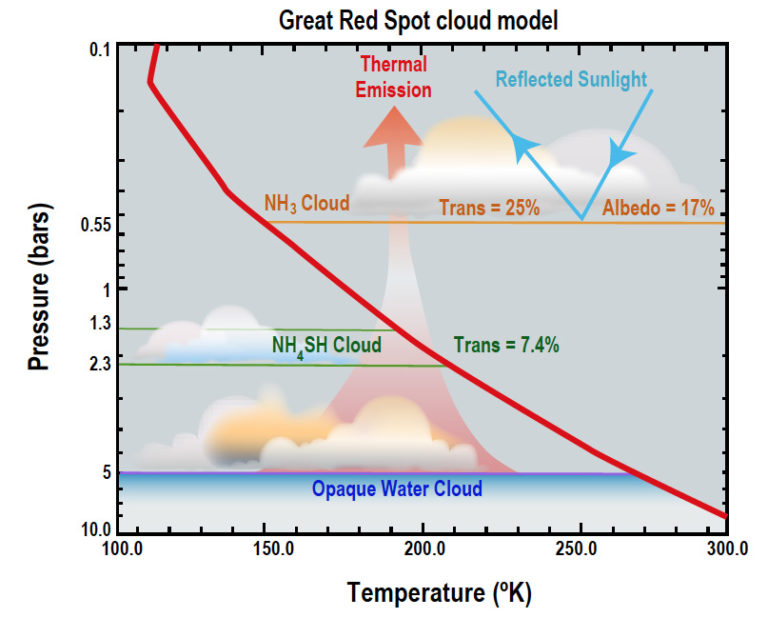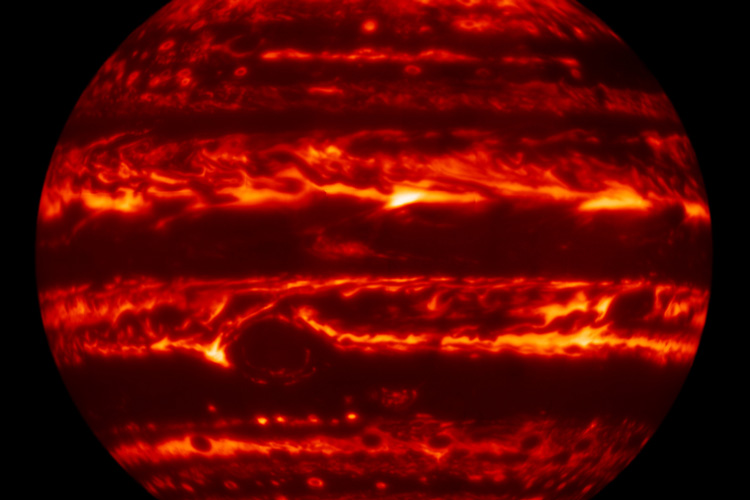Looking for water in Jupiter’s Great Red Spot

Scientists have for the first time detected water clouds deep inside Jupiter’s Great Red Spot – a centuries-old storm larger than planet Earth – allowing them to put tighter limits on the total amount of water in the planet.
The estimates bring scientists closer to reconstructing the history of Jupiter, in particular, whether it formed where it is today, five times farther from the sun than Earth, or much farther from the sun and later migrated to its present location.
“Based upon all the exoplanets now known, it appears as if planets may form at a different place and then migrate in and/or out to where we see them today,” said Imke de Pater, a UC Berkeley professor of astronomy and a co-author of a report that appeared this month in the Astronomical Journal. “So what happened in our solar system? Did Jupiter form beyond where Neptune is today?”
The report’s conclusions are based on measurements of the thermal radiation leaking from the depths of the Great Red Spot made by de Pater and astronomer Mike Wong using telescopes at the Keck Observatory and NASA’s Infrared Telescope Facility (IRTF), both in Hawaii. The 5-micron infrared radiation measurements displayed the chemical signature of water above the planet’s deepest clouds.

Because these clouds sit at a depth where the pressure is five times Earth’s surface atmospheric pressure – right where the temperature reaches the freezing point for water – “I say that we very likely found a water cloud,” said lead author Gordon Bjoraker, an astrophysicist at NASA’s Goddard Space Flight Center in Greenbelt, Maryland.
In fact, for the first time the data showed three distinct cloud layers at different depths: ammonia clouds in the top layer, ammonium-hydrogen sulfide clouds much deeper and the probable water clouds, both ice and liquid, even deeper.
The depth of the water cloud, combined with measurements of another oxygen-bearing gas, carbon monoxide, imply that oxygen is 2 to 9 times more abundant on Jupiter than it is on the sun. The data support theoretical and computer-simulation models that predict abundant water within the planet.
Did Jupiter migrate?
According to de Pater, the higher abundance of heavier elements like carbon, nitrogen, sulfur and oxygen on the gas giant planets, Jupiter and Saturn, prove that they formed differently than the sun, which is mostly hydrogen and helium.

Astronomers think these planets first formed by accretion: gas in the original nebula from which the sun formed condensed into materials that glommed together to somehow form kilometer-sized bodies called planetesimals, which then collided and stuck together to form the cores of the giant planets. Once the cores were about 10 times the mass of Earth, they were able to gravitationally trap gas from the nebula, eventually growing into a giant gas planet with a rock and ice core.
The question astronomers want to answer, de Pater said, is, “Where did these planetesimals form, and thus where did the giant planets form?” The relative abundance of elements gives clues. Mike Wong and other scientists used data from the Galileo probe, which plunged into Jupiter’s clouds in 1995, to find that most heavy elements – carbon, sulfur, nitrogen and the noble gases – are about four times more abundant on Jupiter than in the sun.
Oxygen, in the form of water, did not fit this pattern, Wong said. At its entry site into the atmosphere, the Galileo probe found a much lower abundance for oxygen than for the other elements. But in the Great Red Spot, Bjoraker’s model pegged the oxygen abundance between 2 and 9 times the solar abundance. This is still too uncertain to pinpoint the formation zone of Jupiter, however.
If the relative abundance is between 3 and 4, Jupiter likely formed beyond the orbit of Neptune, where the planetesimals are a mix of rock and amorphous water ice. If the abundance is more than 9 times that in the sun, it likely formed from planetesimals that were a mixture of crystalline ice and rock near its current site, with heavier elements trapped in the ice crystals as so-called clathrates, de Pater said.
The Great Red Spot is full of dense clouds, which makes it hard for light to escape and reach earth-bound astronomers to tell them much about the chemistry within. New spectroscopic technology, such as the 5-micron spectrometers on the Keck telescope and at the IRTF, gave the team a boost. Bjoraker’s technique now needs to be tested on other parts of Jupiter to get a full picture of global water abundance, and his data compared with findings from NASA’s Juno spacecraft, which is now orbiting Jupiter.
“We are continuing to observe and analyze 5-micron data from the Keck telescope and the IRTF as well as microwave data from the Very Large Array in New Mexico and the Atacama Large Millimeter/submillimeter Array in Chile to unravel Jupiter’s three-dimensional composition and atmospheric dynamics,” de Pater said.
